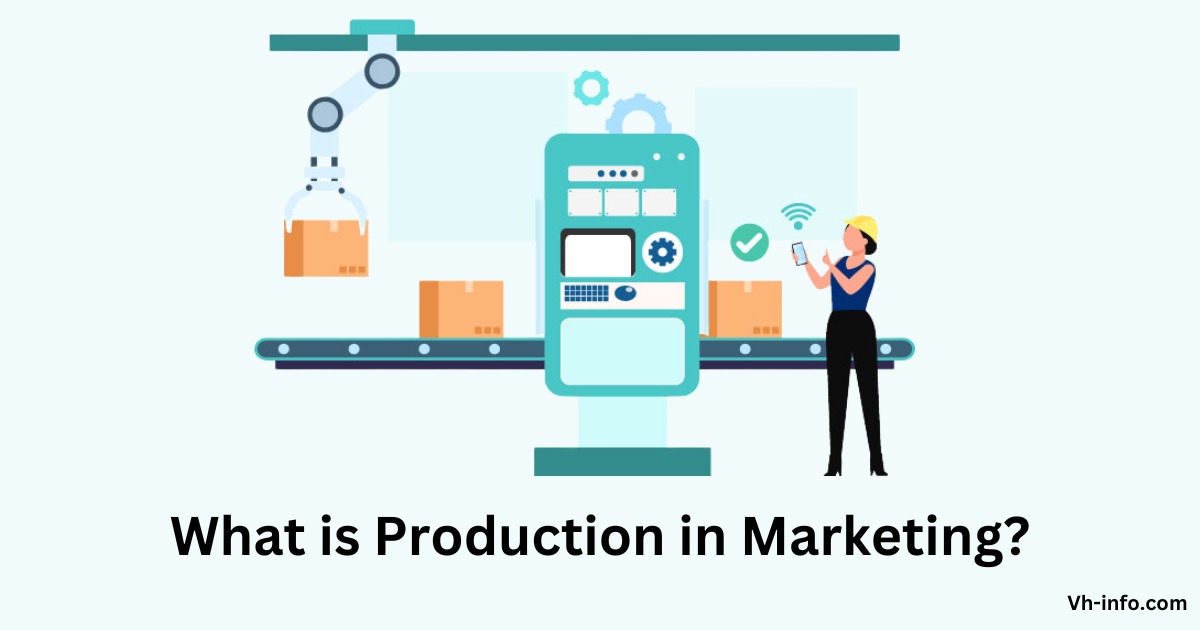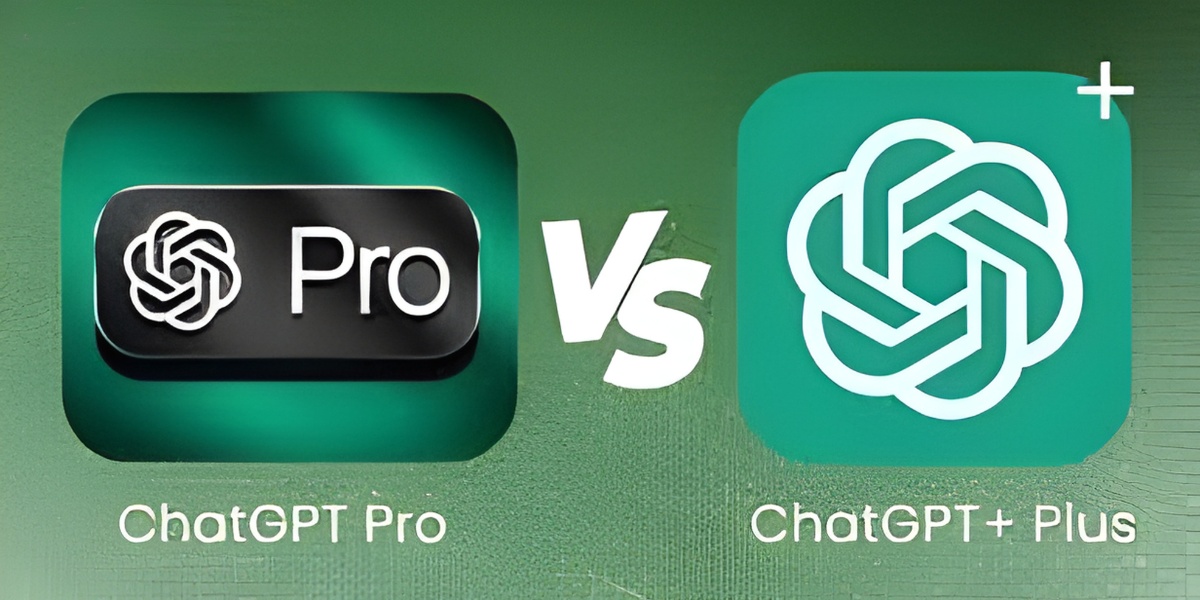At VH Info, we understand that this is a critical question for SaaS companies looking to build links and drive growth.
After all, production and product marketing are essential components of any successful marketing strategy.
In this comprehensive guide, we’ll break down what production means in marketing, why it’s so important, and how it differs from other marketing roles.
We’ll also dive into actionable tips for creating and measuring an effective product marketing strategy, complete with real-world examples.
By the end, you’ll have a clear understanding of how to leverage production and product marketing to take your SaaS business to the next level.
What is Production in Marketing?

In marketing, production refers to the process of creating a product or service to meet the needs and wants of a target audience. It involves transforming raw materials or inputs into a finished product that provides value to customers.
Production is one of the key components of the marketing mix, also known as the “4 Ps” – product, price, place, and promotion.
The product itself is the foundation of any marketing strategy. Without a well-designed, high-quality product that solves a real customer problem, even the best marketing efforts will fall flat.
Why is Production Important in Marketing?
Production is crucial in marketing because it directly impacts a company’s ability to satisfy customer needs and generate revenue.
Here are a few key reasons why production matters:
- Meeting customer demands: By producing products that align with customer preferences and needs, companies can build a loyal customer base and drive repeat purchases.
- Competitive advantage: High-quality, innovative products can help differentiate a brand from competitors and establish market leadership.
- Revenue generation: Efficient production processes enable companies to bring products to market quickly and cost-effectively, maximizing profitability.
- Brand reputation: Consistently delivering well-made, reliable products enhances a company’s reputation and builds trust with customers.
At VH Info, we understand the critical role production plays in SaaS marketing success. That’s why we provide expert guidance and AI tools to help you optimize your product development and link-building strategies for maximum impact.
What is Product Marketing Actually Responsible For?
Product marketing sits at the intersection of product, sales, and marketing. It’s a multifaceted role that spans the entire product lifecycle, from development to launch and beyond.
Here are some of the core responsibilities of a product marketer:
1. Product Messaging and Positioning
One of the product marketer’s main responsibilities is defining how to communicate the product’s value proposition to the target audience. This involves crafting compelling messaging that highlights the product’s unique features and benefits, and positioning it effectively against competitors.
2. Managing Product Launches
Product marketers are the driving force behind successful product launches. They develop the go-to-market strategy, coordinate cross-functional teams, and execute launch activities to generate buzz and drive adoption.
3. Creating Sales Collateral
To enable the sales team to effectively sell the product, product marketers create a range of collateral such as sales decks, demo scripts, battle cards, and case studies. These assets help salespeople communicate the product’s value and handle objections.
4. Customer and Market Research
Product marketers conduct extensive research to gain deep insights into target customers, market trends, and competitive landscape. This research informs product development, messaging, and marketing strategies.
5. Reporting on Product Marketing Success
Product marketers are responsible for tracking and reporting on key metrics related to product adoption, usage, and revenue. They analyze data to identify opportunities for optimization and demonstrate the impact of their efforts.
6. Content Marketing
Many product marketers manage content marketing efforts like blogs, whitepapers, webinars, and social media to engage and convert their audience. A solution like Flipsnack interactive lead generation tool helps turn static content into personalized, clickable experiences that capture qualified leads and improve conversion rates.
7. Managing the Website
The website is often a key touchpoint for potential customers to learn about a product. Product marketers may be responsible for ensuring the website effectively communicates the product’s value proposition and drives conversions.
8. Product Roadmap Planning
While product management typically owns the product roadmap, product marketing provides valuable input based on customer feedback and market research. They help prioritize features and enhancements that will have the greatest impact on customer adoption and satisfaction.
9. Onboarding Customers
Product marketers may also play a role in onboarding new customers and ensuring they have a positive first experience with the product. This can involve creating onboarding materials, welcome emails, and in-app guides to help users quickly see value.
Does The Perfect Product Marketer Exist?
The “perfect” product marketer is a mythical creature – in reality, the role requires a diverse skill set and the ability to adapt to the unique needs of each product and company. However, there are some key qualities that the most successful product marketers tend to possess:
- Deep customer empathy and understanding
- Strong communication and storytelling skills
- Analytical mindset and data-driven approach
- Collaborative attitude and ability to influence cross-functional teams
- Creativity and strategic thinking
- Flexibility and adaptability in a fast-paced environment
While no product marketer will have all these qualities in equal measure, the most effective ones are constantly learning and developing their skills to meet the evolving demands of the role.
How Does Product Marketing Help Sales?
Product marketing is a critical partner to sales, providing the insights, content, and tools that enable salespeople to effectively communicate the product’s value and close deals. Some of the key ways product marketing supports sales include:
- Developing sales collateral and training materials
- Providing competitive intelligence and battle cards
- Conducting win/loss analysis to identify areas for improvement
- Aligning messaging across marketing and sales touchpoints
- Enabling salespeople to demo the product effectively
- Gathering customer feedback to inform product enhancements
What is the Most Important Part of Product Marketing?
While every aspect of product marketing is important, many experts argue that deep customer understanding is the foundation of success. Our Co-founder Vishal Ambani says,
“In this day and age, it’s all too easy for companies to quickly spin up products and features without truly understanding the customer and the problem they’re trying to solve.”
That’s why we’re focused on creating narratives that draw on customer insights so that buyers will see our products as a way to solve their challenges and reach their goals. The most important part of product marketing is doing the hard work upfront to gain that deep customer empathy and ensure you’re building something that truly meets their needs.”
Without a keen understanding of the target audience, it’s impossible to create effective messaging, position the product correctly, or enable sales to close deals. That’s why the best product marketers invest heavily in customer research and use those insights to guide every aspect of their strategy.
How is Product Marketing Different From Other Marketing Roles?
Product marketing is a unique role that combines elements of product management, marketing, and sales. While there is often overlap with other marketing functions, product marketing has some distinct characteristics:
- Focus on a specific product: While other marketers may promote the brand as a whole, product marketers are laser-focused on driving success for an individual product or product line.
- Deep product knowledge: Product marketers need an in-depth understanding of the product’s features, benefits, and technical details in order to effectively position it in the market.
- Collaboration with product and sales: Product marketers work closely with product management to shape the product roadmap and with sales to enable them to sell effectively.
- Ownership of go-to-market strategy: Product marketers are responsible for developing and executing the plan to bring a new product to market, from messaging to launch activities.
While product marketing may share some tactics and channels with other marketing roles, such as content marketing or digital marketing, the focus on a specific product and the close collaboration with product and sales teams set it apart.
How Do You Get Into Product Marketing?
There is no one set path to becoming a product marketer, but to break into product marketing, consider:
- Gaining experience in related roles, such as content marketing or product management
- Building your skills in areas like market research, data analysis, and storytelling
- Networking with other product marketers and staying up-to-date on industry trends
- Seeking out mentorship or training opportunities, such as courses or certifications
What Is a Product Marketing Strategy?
A product marketing strategy is a comprehensive plan for bringing a product to market and driving its growth and success over time. It encompasses all the activities and tactics involved in positioning, promoting, and selling the product to the target audience.
An effective product marketing strategy aligns the product with the needs and preferences of the target customer, differentiates it from competitors, and communicates its unique value through compelling messaging and content. It also includes the go-to-market plan for launching the product and the ongoing efforts to drive adoption, usage, and loyalty by effectively conveying the product’s value.
Some key components of a product marketing strategy include:
- Target audience definition and segmentation
- Product positioning and messaging
- Pricing and packaging
- Launch plan and timeline
- Sales enablement and training
- Customer onboarding and education
- Demand generation and lead nurturing
- Customer feedback and insights gathering
- Metrics and performance tracking
A well-crafted product marketing strategy ensures that all the various elements of product, marketing, and sales are working together in a coordinated way to achieve the business’s goals for the product.
How Do You Create a Product Marketing Strategy?
Creating a product marketing strategy is a multi-step process that requires deep customer understanding, market research, and cross-functional collaboration.
Here’s a high-level overview of the key steps:
Step 1: Research and Develop the Product
The first step in any product marketing strategy is to ensure that the product itself is solving a real customer need and delivering value. This involves:
- Conducting market research to identify customer pain points and preferences
- Defining the target audience and creating detailed buyer personas
- Collaborating with product management to shape the product roadmap and prioritize features
- Testing and validating the product concept with potential customers
Step 2: Formulate the Product Story
Once the product is defined, the next step is to craft a compelling narrative around it. This includes:
- Developing the product positioning and key messaging points
- Identifying the product’s unique value proposition and differentiators
- Creating a messaging hierarchy and pillars to ensure consistency across touchpoints
- Testing and refining the messaging with target customers
Step 3: Create Content with a Well-Honed Narrative
With the product story in place, the next step is to bring it to life through various types of content, such as:
- Website copy and landing pages
- Product videos and demos
- Sales collateral and battle cards
- Blog posts and thought leadership content
- Social media posts and ads
- Email marketing campaigns
All of these content pieces should align with the core product narrative and messaging pillars to create a cohesive story across channels.
Step 4: Launch The Product
The product launch is a critical moment in any product marketing strategy. Key activities in this phase include:
- Developing the go-to-market plan and timeline
- Coordinating cross-functional teams (product, marketing, sales, support)
- Executing pre-launch buzz-building activities, such as teaser campaigns and influencer outreach
- Preparing sales and support teams with training and enablement materials
- Launching the product across key channels and touchpoints
- Monitoring and optimizing launch performance in real-time
A successful product launch sets the stage for ongoing growth and adoption of the product.
Step 5: Review the Launch and Continue to Iterate
After the launch, the product marketing strategy shifts into a mode of continuous improvement and optimization. This involves:
- Gathering and analyzing customer feedback and usage data
- Identifying areas for improvement in messaging, positioning, or tactics
- Iterating on the product itself based on customer insights
- Developing ongoing marketing and sales programs to drive adoption and loyalty
- Tracking and reporting on key metrics to measure success over time
How Do You Measure a Product Marketing Strategy?
Measuring the success of a product marketing strategy involves tracking a range of metrics across the customer journey, from awareness to adoption and loyalty.
Some key metrics to consider include:
- Product awareness and consideration: Metrics like website traffic, social media engagement, and brand search volume can indicate how well the product is resonating with the target audience.
- Lead generation and conversion: Tracking the number and quality of leads generated through product marketing efforts, as well as the conversion rate from lead to customer, can help measure the effectiveness of demand generation tactics.
- Product adoption and usage: Metrics like sign-ups, activations, and feature usage can provide insight into how well customers are adopting and deriving value from the product.
- Customer retention and loyalty: Tracking metrics like customer churn, renewal rate, and Net Promoter Score (NPS) can help gauge the long-term success of the product and identify areas for improvement.
- Sales enablement: Metrics like sales cycle length, win rate, and average deal size can indicate how well product marketing is supporting the sales team and driving revenue growth.
- Marketing ROI: Calculating the return on investment for various product marketing tactics, such as content marketing or paid advertising, can help optimize the marketing mix over time.
Product Marketing Examples
To bring the concepts of product marketing to life, let’s look at a few real-world examples of companies that have executed effective product marketing strategies.
Apple
Apple is known for its sleek, innovative products and its ability to create buzz and anticipation around each new release.
Some key elements of Apple’s product marketing strategy include:
- Focusing on the user experience and benefits, rather than just technical specs
- Creating a sense of exclusivity and desirability around its products
- Leveraging influencers and early adopters to generate word-of-mouth buzz
- Executing highly choreographed product launches with keynote events and media coverage
Billie
Billie is a direct-to-consumer razor brand that has disrupted the traditional shaving industry with its affordable, high-quality products and inclusive messaging.
Some key elements of Billie’s product marketing strategy include:
- Developing a strong brand identity and voice that resonates with its target audience of millennial women
- Using social media and influencer marketing to build awareness and credibility
- Offering a subscription model to drive recurring revenue and customer loyalty
- Addressing social issues and taboos around women’s body hair in its messaging
Pepsi Cola
Pepsi Cola is a classic example of a company that has used product marketing to differentiate itself in a crowded market.
Some key elements of Pepsi’s product marketing strategy include:
- Positioning itself as the “choice of a new generation” and aligning with youth culture and music
- Leveraging celebrity endorsements and sponsorships to build brand awareness
- Developing memorable advertising campaigns and slogans, such as “The Pepsi Challenge“
- Constantly innovating with new product variations and limited-edition flavors
Uber
Uber is a ride-sharing app that has revolutionized the transportation industry with its convenient, on-demand service.
Some key elements of Uber’s product marketing strategy include:
- Focusing on the user experience and making the app as seamless and intuitive as possible
- Leveraging word-of-mouth and referral marketing to drive adoption
- Partnering with local events and venues to build brand awareness and loyalty
- Constantly expanding into new markets and services, such as food delivery with Uber Eats
McDonald’s
McDonald’s is a global fast-food chain that has used product marketing to build a strong brand identity and loyal customer base.
Some key elements of McDonald’s product marketing strategy include:
- Developing iconic products and menu items, such as the Big Mac and Happy Meal
- Using consistent branding and messaging across all touchpoints, from packaging to advertising
- Leveraging partnerships and sponsorships, such as the Olympics and Disney, to reach new audiences
- Constantly innovating with new menu items and promotions to keep customers engaged
MailChimp
MailChimp is an email marketing platform that has used product marketing to stand out in a crowded market and build a loyal customer base.
Some key elements of MailChimp’s product marketing strategy include:
- Developing a quirky, memorable brand voice and visual identity
- Focusing on ease of use and creating a seamless user experience
- Offering a freemium pricing model to drive adoption and upgrades
- Partnering with other tools and platforms to expand its reach and functionality
The Role of Text Marketing in Product Marketing
As part of a well-rounded product marketing strategy, text marketing can be a powerful tool for direct and timely communication. SMS boasts high open rates and fast response times, making it ideal for product updates, onboarding, and promotional campaigns.
Falkon SMS is a strong solution for SaaS businesses looking to scale their business texting efforts. It offers easy integration, automation features, and analytics that help teams engage customers, drive adoption, and boost retention, all while staying compliant with regulations.
By incorporating text marketing software tools like Falkon SMS, product marketers can ensure their messaging reaches users where it matters most: their phones.
Conclusion
At VH Info, we’re passionate about helping SaaS businesses master the art and science of product marketing. Our team of experts has years of experience developing and executing product marketing strategies for a range of SaaS products, from early-stage startups to enterprise solutions.
Whether you’re looking to launch a new product, reposition an existing one, or optimize your product marketing efforts for maximum impact, VH Info has the resources and expertise you need.
From customer research and messaging development to launch planning and sales enablement, we can support you at every stage of the product marketing journey.
So if you’re ready to take your SaaS product marketing to the next level, we invite you to explore our range of resources and services at VH Info. From in-depth guides and templates to personalized consulting and training, we have everything you need to develop and execute a winning product marketing strategy.
Visit us at vh-info.com to learn more and start your product marketing journey today.



